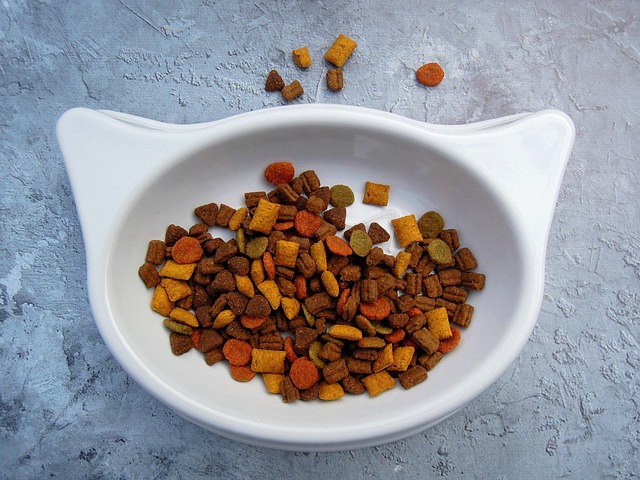Pet Food: Nutrition, Sourcing, and Farm Ingredients
Choosing the right pet food combines nutrition knowledge, ingredient sourcing, and practical considerations like storage and cost. Pet owners increasingly look at protein sources such as chicken and poultry, consider feed labels, and evaluate whether buying in bulk or sourcing from a local farm makes sense for their animals. This article explains common ingredients, how feed is formulated, the pros and cons of bulk purchasing, and what to check when considering poultry- or farm-sourced pet food, helping you make informed choices for companion animals.

How does chicken benefit pet diets?
Chicken is a widely used protein in pet food because it provides essential amino acids and is generally digestible for many dogs and cats. When listed as a primary ingredient, chicken supplies nutrients required for muscle maintenance and overall energy. However, the nutritional value depends on the form (fresh, cooked, or rendered meal) and the balance with other components such as fats, vitamins, and minerals. Owners should read labels to determine whether the chicken is whole meat or a by-product, and look for complete and balanced statements that match the pet’s life stage and activity level.
What should you know about feed formulation?
Feed formulation aims to provide complete nutrition tailored to an animal’s species, age, and health status. Commercial feeds combine proteins, carbohydrates, fats, vitamins, and minerals to meet regulatory standards for pets. Ingredients like chicken or poultry meal are concentrated protein sources, while grains and vegetables supply energy and fiber. Formulation also considers digestibility and palatability. Understanding guaranteed analysis (protein, fat, fiber percentages) and ingredient lists helps evaluate whether a particular feed is appropriate. If managing allergies, sensitivities, or medical conditions, consult a veterinarian for guidance on specialized formulations.
When to consider buying pet food in bulk?
Buying pet food in bulk can be convenient and may lower per-unit costs, especially for multi-pet households or farms caring for multiple animals. Bulk purchases reduce packaging waste and shopping frequency, but they require adequate dry, cool storage to prevent spoilage, rancidity, and pest infestation. For perishable or opened wet foods, bulk buying is usually impractical. Consider the shelf life printed on the bag, how quickly your pets consume the food, and whether you have proper storage containers. Always rotate stock using older bags first to maintain freshness and nutritional quality.
Is poultry-based food suitable for all pets?
Poultry-based diets like chicken or turkey work well for many dogs and cats, but individual tolerance varies. Some animals develop food sensitivities or allergies to common proteins; in such cases, rotating proteins or choosing novel protein sources can be helpful. Pets with specific health issues (pancreatitis, kidney disease, or certain metabolic disorders) may need tailored diets regardless of protein source. Carefully monitor pets when switching to poultry-based feeds for digestive upsets or allergic reactions. For animals with complex health needs, coordinate dietary changes with a veterinarian or a certified pet nutritionist.
How to source pet food from a farm or local suppliers?
Sourcing pet food from a farm or local supplier can mean buying raw ingredients, farm-processed products, or regionally produced commercial feed. If considering farm-sourced meat like chicken, check for safe handling practices, traceability, and whether processing meets local food safety standards. For raw diets, ensure suppliers follow hygiene standards and that you understand risks related to bacterial contamination. If purchasing regionally produced commercial feed, review ingredient sourcing, manufacturing practices, and any third-party testing or certification. Clear labeling and transparent supplier information are signs of reliable sourcing.
This article is for informational purposes only and should not be considered medical advice. Please consult a qualified healthcare professional for personalized guidance and treatment.
Pet owners should also be aware of practical considerations: storage conditions, label literacy, and lifecycle needs. Regularly review your pet’s body condition and behaviour after changing diets, and watch for signs of nutritional imbalance such as weight change, dull coat, or digestive irregularities. Keep feeding guidelines on the package as starting points rather than exact rules—adjust portions based on activity level and body condition. When in doubt about ingredients like poultry meals or the safety of farm-sourced components, seek expert advice to align food choices with your pet’s health.
In summary, understanding pet food involves evaluating protein sources such as chicken and poultry, reading feed labels for complete nutrition, weighing the advantages and limits of buying in bulk, and verifying the practices of farm or local suppliers. Thoughtful selection and proper storage help maintain nutritional value and reduce health risks, while veterinary input ensures diets meet individual animal needs.






